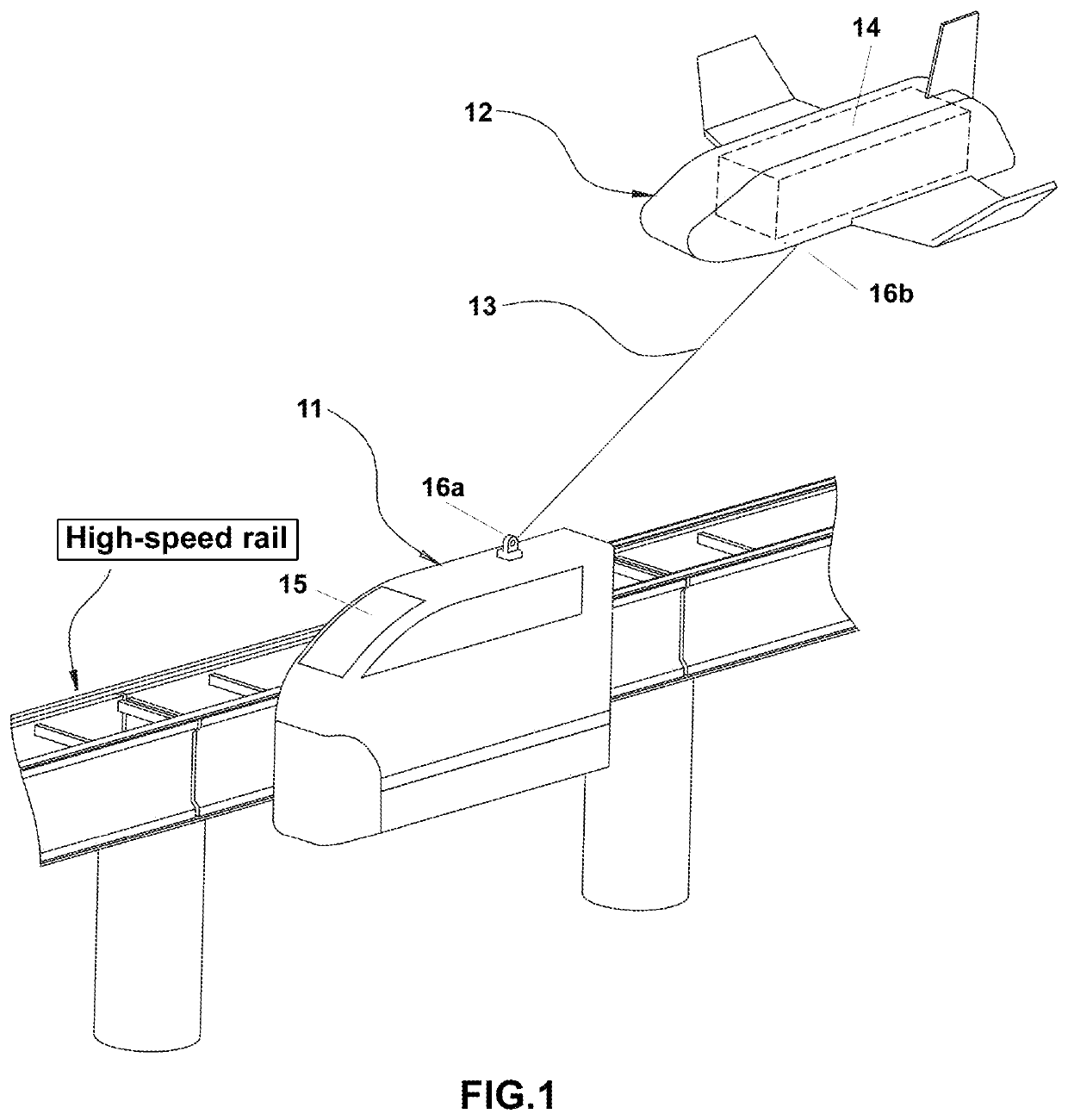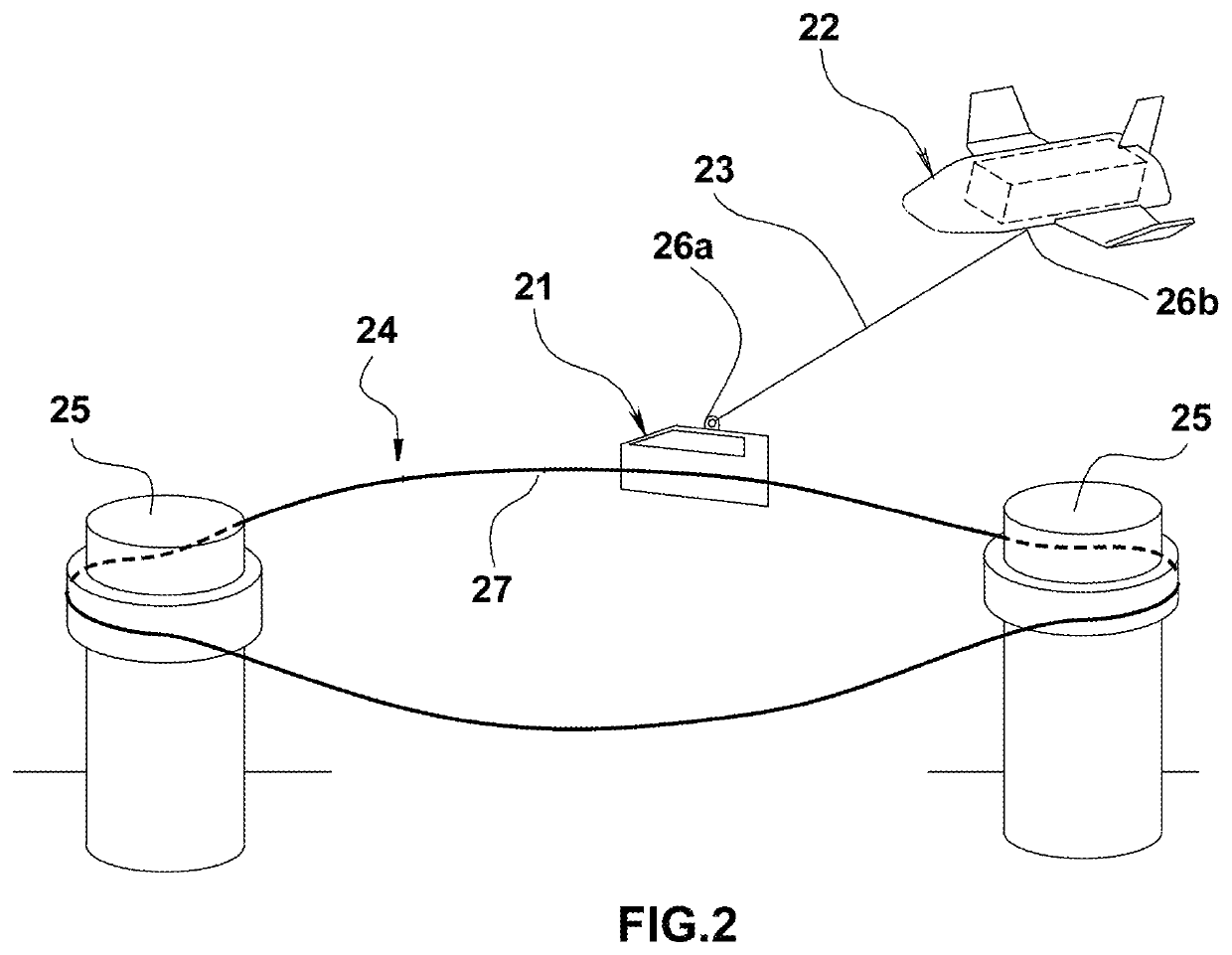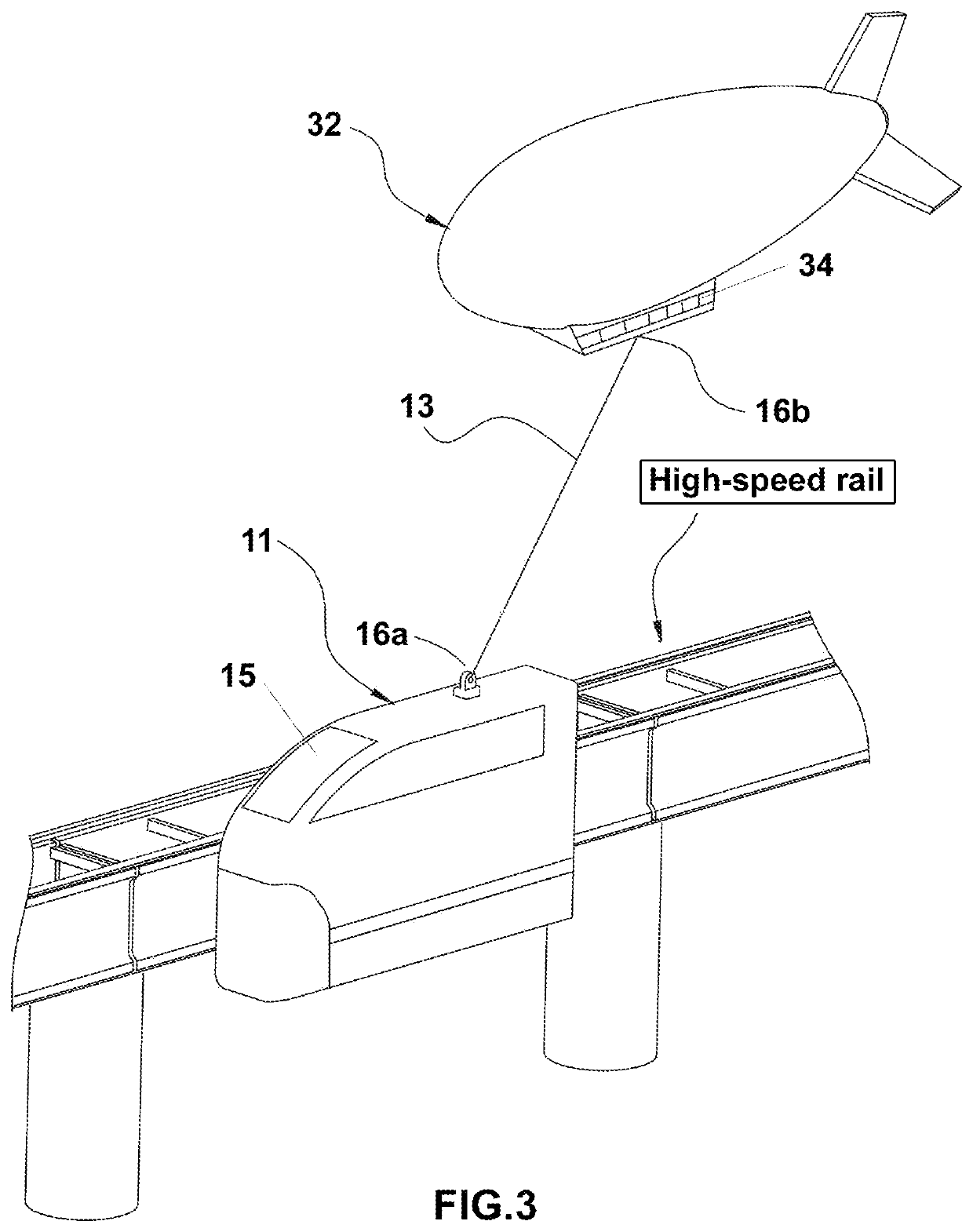Hybrid air transportation
a technology of air transportation and hybrid air, applied in the field of hybrid air transportation, can solve the problems of not being environmentally sound, air transportation, fast, expensive, etc., and achieve the effect of safely transporting passengers and/or cargo, fast and inexpensively
- Summary
- Abstract
- Description
- Claims
- Application Information
AI Technical Summary
Benefits of technology
Problems solved by technology
Method used
Image
Examples
Embodiment Construction
[0021]As used herein, the singular forms “a”, “an” and “the” are intended to include the plural forms as well, unless the context clearly indicates otherwise. Additionally, the use of “or” is intended to include “and / or”, unless the context clearly indicates otherwise.
[0022]The present invention is directed to hybrid air transportation systems for transporting passengers or cargo safely, quickly, inexpensively, and in an environmentally friendly way. These systems all include an airborne vehicle that is connected to the ground, deriving its propulsive force therefrom. In some of these systems, there are two vehicles, a ground-based vehicle and at least one airborne vehicle; in other systems there is only a hybrid vehicle that is airborne but connected to the ground by a rotor inserted into a groove in the ground.
[0023]Thus, in some embodiments, the invention is directed to a transportation system. The transportation system comprises (a) a ground-based powered vehicle, (b) at least o...
PUM
 Login to View More
Login to View More Abstract
Description
Claims
Application Information
 Login to View More
Login to View More - R&D
- Intellectual Property
- Life Sciences
- Materials
- Tech Scout
- Unparalleled Data Quality
- Higher Quality Content
- 60% Fewer Hallucinations
Browse by: Latest US Patents, China's latest patents, Technical Efficacy Thesaurus, Application Domain, Technology Topic, Popular Technical Reports.
© 2025 PatSnap. All rights reserved.Legal|Privacy policy|Modern Slavery Act Transparency Statement|Sitemap|About US| Contact US: help@patsnap.com



